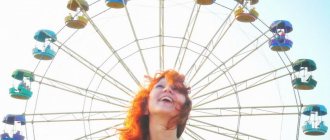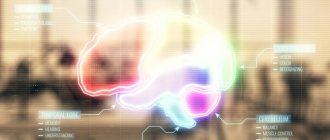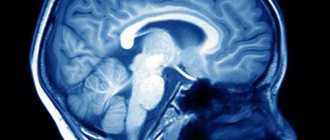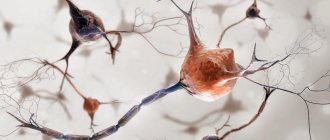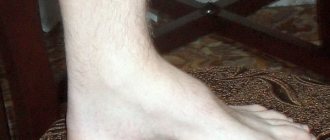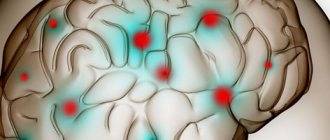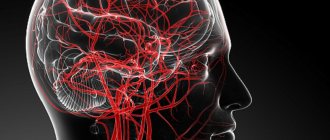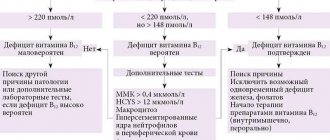Prevention
Prevention of cerebellar stroke involves preventing the development of acute cerebral circulatory disorders. It consists of introducing a healthy lifestyle, balanced nutrition, maintaining adequate body weight, abstaining from smoking and adequate drug treatment of heart and vascular diseases, diabetes and other diseases.
The mortality rate from this disease ranks second in the world. This frightening fact should motivate patients at risk to engage in stroke prevention.
Physical rehabilitation
Current research suggests that if a person is able to walk, physical rehabilitation should include an exercise program with the following components:
- static balance;
- dynamic balance;
- coordination of the trunk and limbs;
- prevention of contracture formation.
Once the doctor determines that the person is able to safely perform the exercises on their own, the patient is encouraged to exercise daily at home. Systematic implementation of a set of exercises contributes to further improvement of the condition. To prevent the risk of falling due to poor balance or poor coordination, patients are advised to use a cane or walker. Since ataxia can lead to severe disability and the need to use a wheelchair, in addition to treating ataxia, it is necessary to take measures to increase muscle strength and general endurance.
Read more about gymnastics and exercise therapy for hereditary ataxia in children on our website.
Related services: Physical therapy Consultation with a neurologist
Symptoms of ischemic stroke of the cerebellum
Damage to the cerebellum is primarily manifested by impaired coordination and balance. There are two types of cerebellar stroke: isolated in a certain area and extensive.
Symptoms of isolated cerebellar stroke:
- Disorders of the vestibular apparatus, gait, fine motor skills of the hands;
- Impaired speech and hearing, the victim is unable to pronounce words or make sounds;
- Severe dizziness and nausea;
- Acute pain in the occipital region;
- Coordination of movements and sense of balance are impaired.
Symptoms of extensive cerebellar stroke:
- Acute headache, vomiting and nausea (general cerebral symptoms);
- Coordination of movements and hand motor skills are impaired;
- The patient's speech suffers;
- The patient is unable to maintain balance;
- Respiratory and cardiac functions are impaired;
- The patient is unable to control the functioning of the tongue and make swallowing movements.
Diagnostics
A cerebellar stroke is often accompanied by headache, dizziness and nausea. Since the cerebellum in the human body is responsible for coordination and balance, if the cerebellum is damaged, the patient cannot perform simple actions, for example: raise two arms at the same time and hold them, move the arm to the side.
The main instrumental method for diagnosing cerebellar strokes is neuroimaging. However, in the most acute period of the disease (during the first 8 hours), ischemic zones are not yet determined by CT. MRI is a more sensitive method for visualizing cerebellar infarction, since the images do not show artifacts from bone structures.
Make an appointment
Cerebellar ataxia
Treatment of the causative disease is fundamental. If cerebellar ataxia has an infectious-inflammatory origin, it is necessary to prescribe antibacterial or antiviral therapy. If the cause lies in vascular disorders, then measures are taken to normalize blood circulation or stop cerebral bleeding. For this purpose, angioprotectors, thrombolytics, antiplatelet agents, vasodilators, and anticoagulants are used in accordance with indications. For ataxia of toxic origin, detoxification is performed: intensive infusion therapy in combination with the prescription of diuretics; in severe cases - hemosorption.
Ataxia of a hereditary nature does not yet have a radical treatment. Metabolic therapy is mainly carried out: vitamins B12, B6 and B1, ATP, meldonium, ginko biloba preparations, piracetam, etc. To improve metabolism in skeletal muscles, increase its tone and strength, massage is recommended for patients.
Tumors of the cerebellum and posterior cranial fossa often require surgical treatment. Removal of the tumor should be as radical as possible. If the malignant nature of the tumor is established, a course of chemotherapy or radiotherapy treatment is additionally prescribed. For cerebellar ataxia caused by cerebrospinal fluid duct occlusion and hydrocephalus, shunt operations are used.
Prognosis and prevention
The prognosis depends entirely on the cause of cerebellar ataxia. Acute and subacute ataxia caused by vascular disorders, intoxication, inflammatory processes, with timely elimination of the causative factor (vascular occlusion, toxic effects, infection) and adequate treatment, can completely regress or partially persist as residual effects. Chronically progressive, hereditary ataxias are characterized by an increasing aggravation of symptoms, leading to disability of the patient. The most unfavorable prognosis is for ataxia associated with tumor processes.
The prevention of injuries, the development of vascular disorders (atherosclerosis, hypertension) and infection is of a preventive nature; compensation of endocrine and metabolic disorders; genetic counseling when planning pregnancy; timely treatment of pathology of the cerebrospinal fluid system, chronic cerebral ischemia, Chiari syndrome, processes of the posterior cranial fossa.
Causes of ischemic stroke of the cerebellum
Disruption of blood flow through the vessels of the cerebellum leads to either their blockage, which happens much more often, or rupture, in which case the result is a hematoma.
Ischemic stroke of the cerebellum, or infarction, occurs due to thrombosis or embolism of the vessels supplying the organ. Embolism is most common in patients suffering from cardiac pathology.
Thus, there is a high risk of blockage of the cerebellar arteries by thromboembolism during atrial fibrillation, recent or acute myocardial infarction. Intracardiac thrombi with arterial blood flow enter the brain vessels and cause their blockage.
Thrombosis of the cerebellar arteries is most often associated with atherosclerosis, when there is a proliferation of fatty deposits with a high probability of plaque rupture. With arterial hypertension during a crisis, so-called fibrinoid necrosis of the arterial walls is possible, which is also fraught with thrombosis.
Hemorrhage into the cerebellum, although less common than a heart attack, causes more problems due to tissue displacement and compression of surrounding structures by excess blood. Typically, hematomas occur due to arterial hypertension, when, against the background of high pressure numbers, the vessel “bursts” and blood rushes into the cerebellar parenchyma.
Other causes include arteriovenous malformations and aneurysms that form during fetal development and remain undetected for a long time because they are asymptomatic. There have been cases of cerebellar stroke in young patients associated with dissection of a section of the vertebral artery.
Expert opinion
Author: Andrey Igorevich Volkov
Neurologist, Candidate of Medical Sciences
Cerebellar stroke accounts for the smallest proportion of all strokes - no more than 1.5%. It is also the least studied type of acute cerebral circulatory disorder. The disease occurs 3 times more often in men than in women and rarely affects young people.
The clinical picture of isolated cerebellar strokes boils down to uncoordination of movements, unsteadiness of gait, and loss of balance. However, these symptoms do not always appear in small areas of cerebellar stroke. The only reliable method for diagnosing and identifying the area of brain damage is MRI. Based on the examination results, it is necessary to immediately prescribe adequate drug therapy to avoid complications.
The Yusupov Hospital has a neurology clinic, where patients suspected of having a stroke undergo diagnosis, treatment and a set of rehabilitation measures necessary for the complete restoration of damaged functions. According to research, with qualified rehabilitation, it is possible to completely eliminate coordination problems and voluntary movements due to cerebellar stroke. Thanks to timely effective therapy, the risk of recurrent attacks is reduced.
First aid
First aid for a cerebellar stroke at the prehospital stage is to immediately call an ambulance.
Before the medical team arrives, you need to do the following:
- lay him down so that his head is higher than his body;
- provide access to fresh air, remove all tight clothing;
- measure blood pressure, most likely it will be elevated, so the person needs to be given a drug that he takes “for blood pressure” constantly;
- if the heart rhythm is disturbed and breathing becomes difficult, it is imperative to begin resuscitation (even if the victim is conscious).
Rehabilitation and restoration of the cerebellum after stroke
Stroke rehabilitation should be provided by a physician trained in rehabilitation and physical therapy, as well as by other physicians with experience or primary training in stroke rehabilitation—occupational therapists, physical therapists, nurses, social workers, and nutritionists. The patient and his family are also included in the core team.
Immediately after a patient has had a stroke, doctors usually allow local massage procedures. It is advisable to start massage after a stroke as early as a person’s health allows. If the patient is in normal condition, then the procedure begins on the second day. They start with segmental and point massage. The flexion groups are massaged on the lower extremities, and the extensor groups are massaged on the upper extremities.
The first massage sessions last for 5-10 minutes, with a gradual increase in time up to half an hour. When prescribing a massage, it is very important to remember the contraindications: fever, high blood pressure, headaches, heart problems, problems with the respiratory system.

